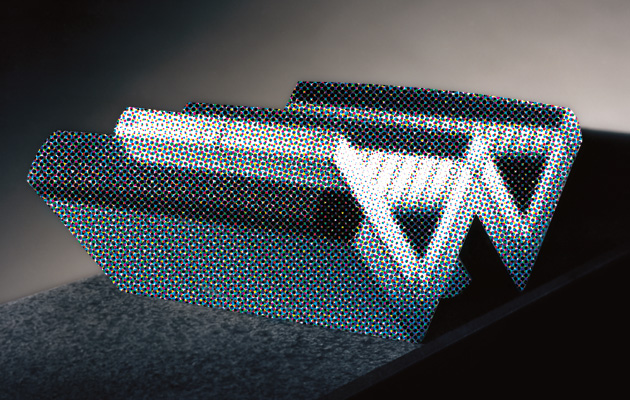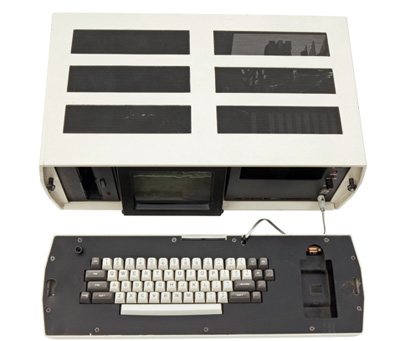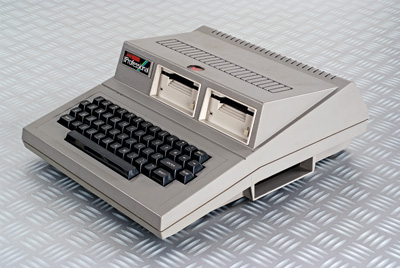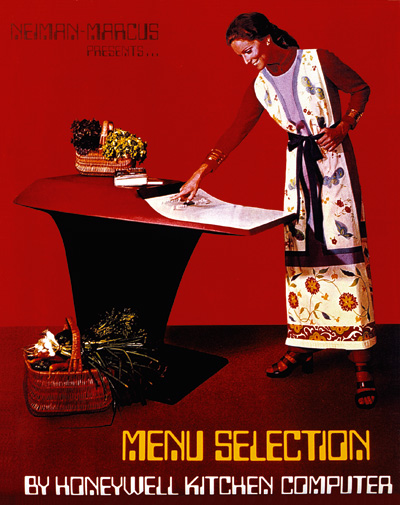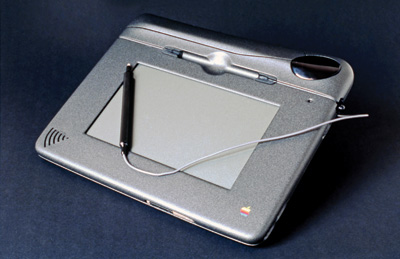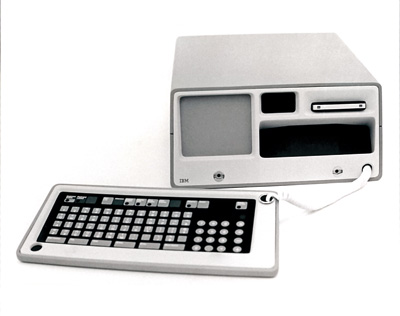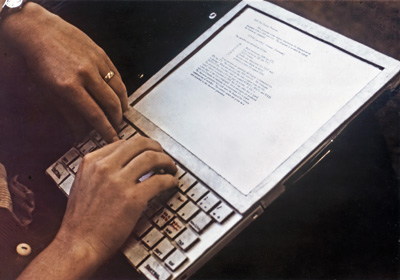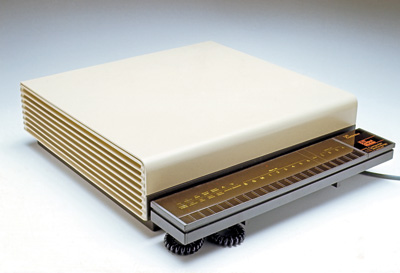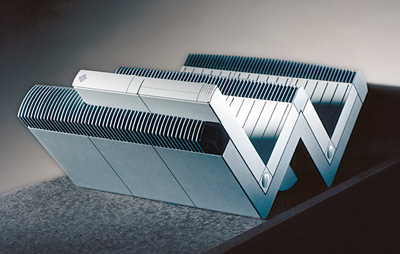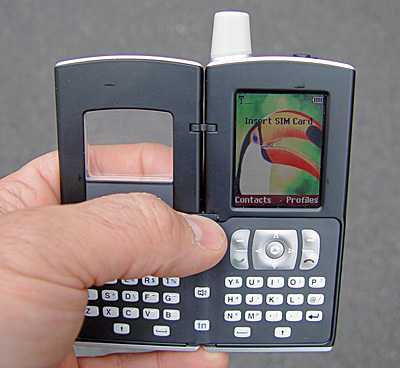|
Sun modular computer (1990), designed by Paul Bradley and Jochen Backs |
||
|
The history of computing isn’t a triumphal progress from Charles Babbage’s Difference Engine to the new MacBook Pro. In his book about vapourware, Paul Atkinson looks at designs that were too ahead of their time, ones that didn’t work, or were even fictional This article was first published in Icon’s April 2014 issue: Unmade, under the headline “Ghost tech”. Buy old issues or subscribe to the magazine for more like this Vapourware is a term for computer products that a company announces, but doesn’t put into production. This might seem a straightforward concept, but arguments over what counts as “vapourware” have continued for years. There are several reasons a prototype may not have gone into production, the most common of which is that a manufacturer or software house keeps on announcing the imminent launch of a new product which is a long way from actual production; sometimes it doesn’t exist at all. In other words, the term describes a deliberate attempt to mislead the buying public. But the failure of an announced product to reach the market isn’t always a fraud. By the time a product is ready for market, more than one company has found that the technology already exists. There are also cases where an internal project was common knowledge throughout a large corporation, as well as to business partners, and even third party software developers and technical journalists. Often, companies demonstrated working prototypes In this respect, they are all vapourware – tantalising glimpses of what might have been had circumstances been different. The comparable terms “hardware” and “software” are not pejorative, and neither are the terms “firmware”, “shareware” or ‘freeware’. The fact that these designs haven’t been tested in the marketplace doesn’t mean that they have had no impact. Ideas for products, rather than products themselves can have influence far beyond that expected. Some of the hard evidence in the form of actual prototypes has long been consigned to the dustbin of history, leaving photographs as the only record. Rumours surface with no supporting evidence, and finding that evidence has often entailed arduous detective work. A history of vapourware provides an entertaining view of an alternate world, of products that could have been available, or others that were just fantasy. Was a housewife ever meant to store recipes in a 16-bit computer in 1969? The stories behind individual examples of vapourware confuse the idea of progress over time and provide an alternative history of computing, It’s a story of missed opportunities over the decades, from mainframes and minicomputers, to personal computers and mobile computing, up to the present day.
01 Xerox Notetaker (1978) Alan Kay had invented the concept of an open-source notebook-slim computer in 1968, in the form of the Xerox Dynabook, but ten years later, Xerox still hadn’t produced a portable computer that used existing technology. In 1976, Kay and his team began developing a computer that could “fit inside a suitcase”, basing it on the Alto computer, a research model, with a graphic interface and an early mouse – this is the model that Steve Jobs saw during a visit to Xerox PARC in 1979. The final design had 128kb of memory (which was a lot at the time), and an ethernet board to connect it to other computers. The downside was that its components came to $20,000 and it weighed 20kg in a carrying case.
02 Dragon Professional (1983) Dragon, a subsidiary of Mettoy, a Welsh toy company, rushed its first 32kb microcomputer into the market after the launch of the Sinclair Spectrum. The beige casing and built-in sloping keyboard echoed the Apple II – and the cases were moulded by the same injection moulding machines that made its parent company’s toys. Unlike the Apple II the Dragon was stocked in Boots the Chemist – and demand was so high that the company couldn’t keep up. After the involvement of new investors, Dragon made a new, upgraded, version for business users. The 64kb model’s lack of a cooling fan led to overheating and often cut out after an hour’s use. One more model, the Dragon Professional, was marketed, but didn’t have time to be made before the company went bankrupt in 1983.
03 Honeywell Kitchen Computer (1969) Why would a department store, Neiman Marcus, feature a computer for $10,600 in its catalogue and what was a housewife to do with a 16-bit minicomputer, in the kitchen anyway? The price included the cost of a two-week training session for the user – in entering recipes into the computer, and the slogan read: “If she can only cook as well as Honeywell can compute.” The truth is that the item was a fantasy offering in the spirit of the 1960 catalogue’s “His and Hers” airplanes, price tag: $176,000.
04 Compaq Dualworlds Notebook (2001) Compaq developed the Dualworlds design to solve the problems of poor ergonomics associated with laptop and notebook computer use and to remove any need for a desktop PC and laptop computer to be used in the same desk space. The solution cleverly combined the forms so that in one configuration it looked just like any other notebook computer, yet it could be altered to be identical to a full desktop PC arrangement with a separate mouse and keyboard. The design was finished to a pre-production stage just before HP took over Compaq. The project was cancelled before it could go into production.
05 Apple Figaro (1991) The Figaro, a flat tablet computer with an injection-moulded case and a LCD touch-sensitive screen, was an early attempt at pen computing. It was the pet project of John Scully, then the CEO of Apple, who imagined “a portable, voice-activated computer that could search the Internet for information”. Apple’s in-house design team came up with a concept model; it looked like a book that could fold in half, had no keyboard and included a camera for videoconferencing and a built-in carry handle. By 1989, Apple had technical answers, but didn’t know what the device should look like. After commissioning several designers, including Sottsass, it opted for Giugiaro Design’s solution (pictured). But in the end the product was considered “not Apple enough”.
06 IBM Yellow Bird (1976) The Yellow Bird was an in-house attempt to persuade IBM’s management that the computer giant needed to think about personal computing. Tom Hardy, who designed the SCAMP model in 1973, came up with a simpler, lower cost, concept three years later. The Yellow Bird was meant to plug in to a TV set, which would become the display, the processor unit was in the back of the casing, and the data was stored in the same kind of magnetic tape cartridge used by the IBM 5100 portable computer. It also had a small built-in printer, just like a cashier’s till (or BERG’s Little Printer). And still the IBM executive board was unconvinced – in the same year that Steve Jobs and Steve Wozniak began selling the Apple I.
07 IBM scamp (1973) The prototype of the IBM SCAMP is now in the Smithsonian Museum, where it is described as “the world’s first single-use computer” – ie a personal computer, rather than a mainframe accessed by many users. The designer, Tom Hardy, made a design model of the SCAMP (Special Computer APL Machine Portable), so that executives could show potential customers the new concept. The large black slot on the front was an acoustic coupler for a handset to connect to the phone network. The flat-panel, touch keyboard was much more advanced than IBM keyboards of the time, but the project never advanced beyond this mock-up.
08 Xerox dynabook (1968) When Alan Kay at Xerox conceived of the Dynabook, the technology to realise it didn’t exist. (And Xerox’s notorious and complete lack of interest in home computing didn’t help.) Forty-five years later, the former Xerox Parc’s computer scientist (later chief scientist at Atari) says that his concept still hasn’t come into being. The aspect that everyone recognises, the Dynabook’s notebook form, is only five per cent of the idea. Kay’s belief in open-source systems meant that the device was to extend computer literacy itself – you should be able to share and edit everything. He has spoken of Apple’s closed operating systems and locked apps as a betrayal of open-source ideals, and is closely involved in the One Laptop Per Child project.
09 CTL Modular Three Minicomputer (1972-73) In the early 1970s, a minicomputer was considered to be a mid-range machine with a processing power between that of a mainframe and a microcomputer and a memory of about 4k. Bill Moggridge and John Elliot’s CTL Modular Three was a “desktop” version of an existing minicomputer for the British company Computer Technology Limited. The Modular One was made up of washing-machine-sized units which could be assembled as the user wished. It was more expensive to make than its more conventional competitors – and difficult to maintain. The smaller, but still fiddly Modular Three was built on a chassis so that it could be used as pictured, or fitted on to a rack.
10 Sun Modular Computer (1990) Sun Microsystems made high-end computers and was a keen proponent of open computing. It developed several open-source software systems, including the cross-platform Java programming language and the free OpenOffice suite of business software. However it was unimpressed by Matrix Design’s proposal for an injection-moulded desktop unit with hard drive and disk drive and a casing consisting of a series of expansion units edged with metal finned heat sinks. The zigzag processing unit, which could be connected to printers and monitors, could be laid flat (pictured) or placed vertically. Sun didn’t like Matrix’s second design, of a pen computing system, either, and concentrated on its existing successful software and server businesses.
11 Phonebook (1997-2007) The Phonebook was an early attempt, originally by Psion Computers, to combine the best features of an electronic organiser with a mobile phone, with a QWERTY keyboard large enough to type on easily. The designer Martin Riddiford and his backers patented the design, intending to license the design to a mobile phone manufacturer. They got as far as making a working prototype but none of the phone companies they pitched to signed on. The patent lapsed and the arrival of smartphones made the idea obsolete – although it still has benefits for people who like typing on their phone.
12 IBM Tablet Leapfrog (1989-92) By the time in-house industrial designer Tom Hardy became the head of IBM’s design programme in 1989, the company was no longer seen as an innovator. The Leapfrog was an attempt by German designer Richard Sapper to produce the equivalent of “a concept car”. The project’s name reflected the company’s desire to look four or five years ahead and visualise the new products future technology might create. The tablet’s form was inspired by the image of a ream of paper being pushed over. The Leapfrog was produced as a closely guarded prototype in 1992. After its unveiling in 1993, design magazines mistakenly wrote about it as if it was a real product. Delete: A History of Computer Vapourware, by Paul Atkinson, is published by Bloomsbury |
Words Paul Atkinson |
|
|
||

